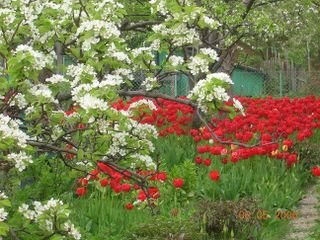What, Where ...and when?
In the first VIDEO edition of our contest we asked you where in Warsaw was our movie made....aaAND we have a winner!
BeccaSteel had answered the question on our forum, giving the correct location.
!!!CONGRATULATIONS!!!
It's
Most Poniatowskiego:
The Prince Poniatowski bridge dates back to the very beginning of the XX c.
It was the third bridge to be build in Warsaw. The other two were "Most Kierbedzia" - today Most Sląsko-Dąbrowski, and a bridge at the Warsaw Citadel - in place of today's Most Gdański.
End of nineteen century Warsaw, under Tzars Russia's rule, was a fortified city - part of Vistula defense line against possible German invasion. City's government was ignoring the needs of a growing population in favor of maintaining the strategic barrier of the river. It took a bribe to finally get their acceptance for the projects - seems that, for over a 100 years, certain things didn't change.
Original neo - renaissance design of the bridge's entrance towers and pavilions was a work of Stefan Szyller, one of distinguished architects of the era, author of the Polytechnic building, and Warsaw's University's entrance gates. Technical design was done by Mieczysław Marszewski, who also supervised the building process (and was later arrested over too high costs of the project - again, it sounds familiar).
The works begun in 1904. It took almost ten years to complete. Across river communication was established in 1913 - the 100-year anniversary of the death of prince Józef Poniatowski. Hence Warsaw's citizens started referring to it as "The Poniatowski Bridge" (or simply - "the third bridge"). The crossing was officially opened in 1914, and given the name of Tzar Mikołaj II.
It's beginnings were - well... - unlucky. The very next year, over the course of the Great War, Russian army retreating from Warsaw blew up part of the bridge. Germans, who replaced them, set to rebuild it: temporary wooden "patch" allowed the crossing to be reopened in 1916 - only to be destroyed by fire the very next year...
In the II RP renovation started in 1921. It was partially completed in 1925, and finished in '27. Together with newly developed Saska Kępa district, the bridge formed a model of urban development for city officials who at some point aspired boldly - and in vain - to hold Word Exhibit. (Just as today Polish officials have a peculiar hobby of aspiring for organization of various sport events...)
During Warsaw Uprising, Poniatowski Bridge was destroyed again. Before blowing it up in the face of advancing Red Army, Germans used it to cover Old Town with fire of 88 mm cannons.
In 1946 the crossing was repaired, but the original design suffered a lot. During the fifties the towers on the right riverbank were torn down. In the sixties the bridge was broaden, with two new lanes added. Finally, during the five year renovation of 1985-90, it was partially restored to it's original shape, although not it's full glory.
~~oOo~~
In the end, another little contest.
On the second of May, 1926, around 5.00 p.m. our bridge was a meeting point for certain two gentlemen. Who can tell who they were?
***********************************************************************************
PolBlog - News Poland 24/7
Poland's first (almost) daily English-language news blog.
Read the news then share your views
# posted by Rostkowianka @ 28.11.05

















0 Comments:
Prześlij komentarz
<< Home